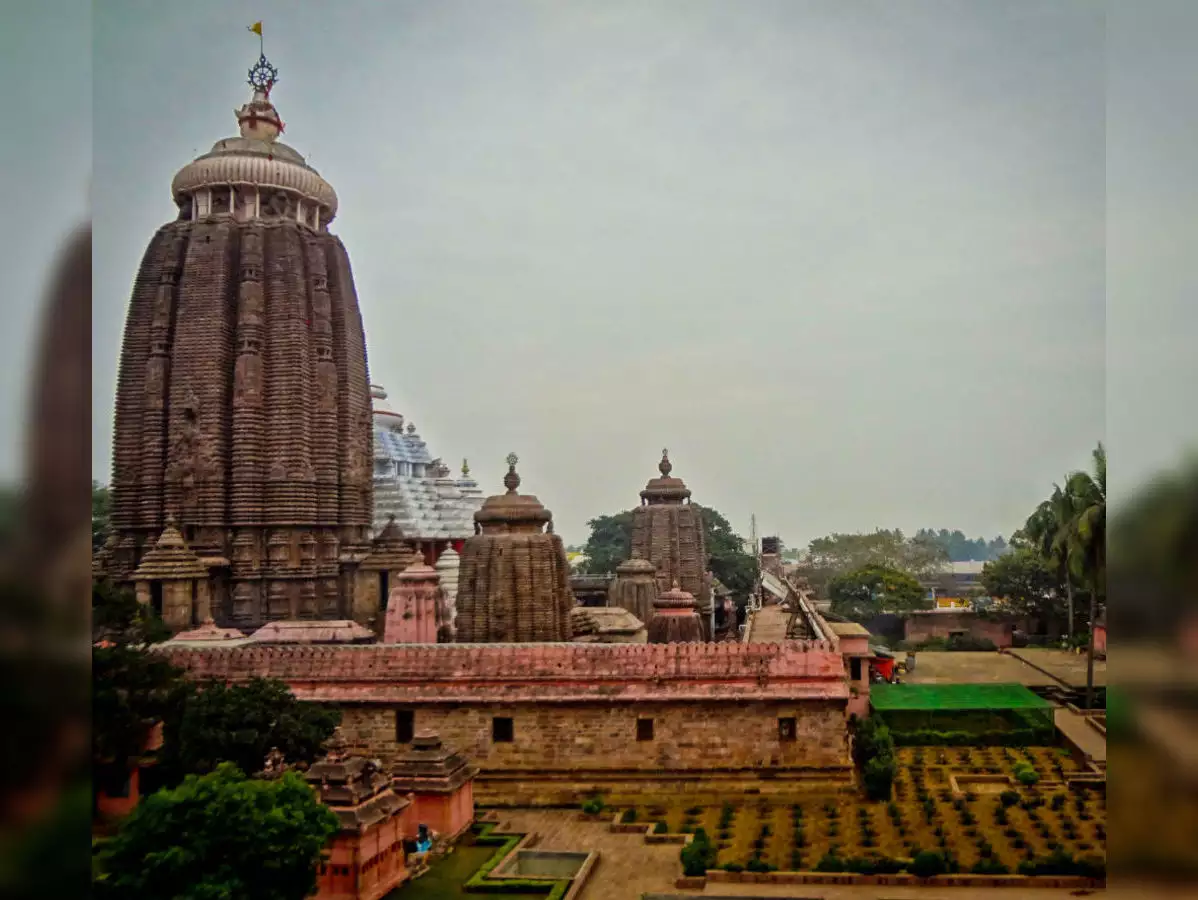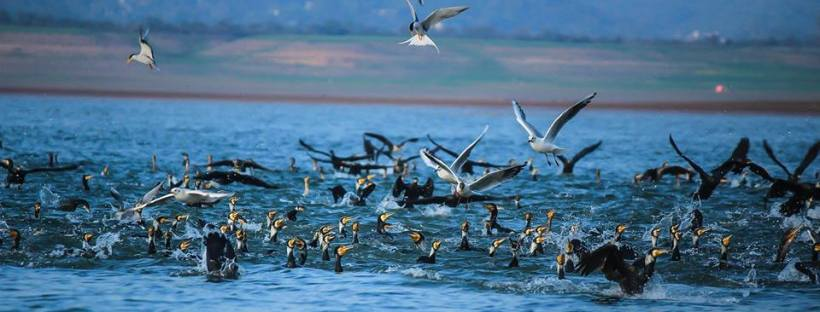
About the UN Human Rights Council (UNHRC):
- A United Nations body established in 2006.
- It is an Inter-governmental body, which replaced the former United Nations Commission on Human Rights.
- Headquarter: Geneva, Switzerland.
- Mission: To promote and protect human rights around the world.
- Membership
- 47 members elected by the UN General Assembly for 3 years terms.
- Region-based grouping for membership:
- 13 from Africa,
- 13 from Asia,
- 6 from Eastern Europe,
- 8 from Latin America and the Caribbean (GRULAC),
- 7 from the Western European and Others Group (WEOG)
- No member can occupy a seat for longer than 2 consecutive terms.
- Funding
- Almost two-thirds of UN Human Rights’ income comes from voluntary contributions from the Member States and other donors.
- The remainder is covered by the UN regular budget.
- The UNHRC passes non-binding resolutions on human rights issues through a periodic review of all 193 UN member states called the Universal Periodic Review (UPR).
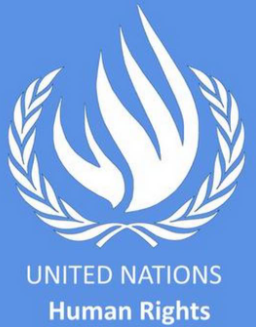
Image Source: TH
Amal (Hope) Mission of UAE<
In News: UAE’s space centre in Dubai confirmed the unmanned craft, called Amal, Arabic for Hope, had reached the end of its nearly seven-month, 300-million-mile journey and had begun circling the red planet.
About Amal (Hope) Mission of UAE:
- Due to Amal’s arrival, UAE has joined a league of just five space agencies in history that have pulled off a functioning Mars mission.
- It was the country’s first venture beyond Earth’s orbit.
- It will study the Mars Atmosphere.

Source: IE
About Mars Mission following Hope mission:
- Tianwen-1 Mars Mission: Chinese Lander- Rover combination
- It will look for signs of ancient life.
- Perseverance: Rover from the US;
- It will be the first leg in the US-Europe joint attempt to bring Mars Soil to Earth.
- It will help examine if the planet had microscopic life in the past.
- About 60% of all Mars missions have ended in failure.
- Reasons behind failures:
- Crashing.
- Burning up.
- Falling short in the testament to the complexity of interplanetary travel.
- Failure during the descent through Mars’ thin atmosphere.
- Reasons behind failures:
About other Mars Missions:
- At present, a total of 6 satellites (3 US, 2 Europe, and 1 Indian) excluding Amal are revolving around Mars. Amal will be the 7th one.
- Only two landers are at present operational on Mars i.e. InSight and Curiosity of NASA.
|
Successful Mars Missions |
Nation/ Agency |
|
USSR |
|
NASA (USA) |
|
European Space Agency (EU) |
|
ISRO (India) |
Benefits of Mars Mission:
- Space Diplomacy: The quest to win space is picking up and India also needs to set up to create its own hegemony.
- Mineral Resources: It may be a vital source of minerals in future
- Deep Space Communication Network: Mars satellites may act as a node for establishing a communication link for far space exploration.
- Origin of Life and Planetary System: It may help in understanding how the solar system came into existence.
- The catalyst for innovation: Many space technologies are now in common parlance and popularised by ISRO.
- Chances of Human Habitation in Future.
Criticism of Mars Mission:
- Wastage of money which could have been used to Solve Hunger and Poverty problems.
- Hasty and Less effective: Too many Mars Missions and space race has led to wastage of resources.
- Space Debris: Nearly 60 percent of missions have failed, leading to a large number of pieces floating in space.
|
About Mars:
|
Source: TH
Excessive Use of Fertilizer
In News: All India Coordinated Research Project on ‘Long Term Fertilizer Experiments’ over five decades have indicated that continuous use of nitrogenous fertilizer alone had a deleterious effect on soil health and crop productivity.
Other findings of the Project:
- Even the recommended value of NPK is causing micro and secondary nutrient deficiency.
- It is hampering plant growth and causing physiological disorders.
- Groundwater Pollution: Possibility of Nitrate Pollution above 10mg nitrate per liter
- Human/ Animal Health at risk.
- Nitrate pollution causes Blue Baby Syndrome in newborns.
- Fertilizer Consumption from 2018 till Kharif 2020 is as listed below in the table.
|
Fertilizers |
Quantity (in million tonnes) |
Comments/ Remarks |
|
Urea |
54.38 |
|
|
Di-Ammonium Phosphate (DAP) |
56.21 |
|
|
Muriate of Potash (MOP) |
59.88 |
|
|
Complexes and Single Super Phosphate (SSP) |
33.85 |
|
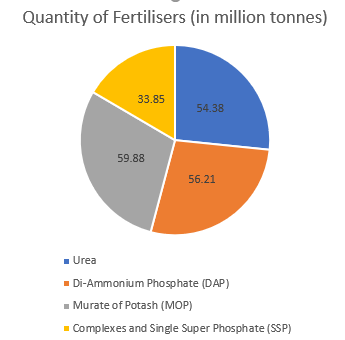
Other Problems due to excess use of fertilizers:
- Increase in input cost of farmers: It makes agriculture a less profitable occupation, aggravates Farm indebtedness and Farmers’ Suicide.
- Land Degradation: Nearly 29% of land in India is degraded.
- Dairy Product Quality: There were reports that Punjab Dairy has a relatively high level of fertilisers and hence unfit for consumption.
- Export Rejection: Many agricultural exports are being rejected on grounds of Phytosanitary measures cited by Europe and other nations
Recommendations, Initiative by Govt. to tackle the problem:
- ICAR recommends
- Soil test based balanced and integrated nutrient management through conjunctive use of both inorganic and organic sources of plant nutrients.
- Use of slow-releasing N-fertilizers (Neem Coated Urea) and nitrification inhibitors.
- Growing leguminous crops.
- Use of resource conservation technologies (RCTs).
- National Mission on Soil Health Card:
- promote soil test based balanced and judicious fertilizer application in the country
- Parampragat Krishi Vikas Yojana (PKVY)
- Mission Organic Value Chain Development for North East Region (MOVCD-NER)
- Training and demonstrations are organized through ICAR institutions including Krishi Vigyan Kendras (KVKs) and agricultural universities.
Way ahead:
- The problem is not in policy formulation and schemes but in awareness level and implementation. To promote the organic brand and to double farmer’s income in a sustainable way there is a need to hand-hold farmers.
Source: PIB
Broad Topics -GS III/EBD
Mission Innovation 2.0
In News –The Union Minister of Science & Technology addressed the beginning of Mission Innovation 2.0.
- The objective is to reflect on progress, set the scene for the discussions towards an ambitious next phase of Mission Innovation.
About:
- The Minister lauded Mission Innovation’s contribution to accelerating clean energy innovation and emphasized Mission Innovation’s role in mobilizing greater public and private investments, partnerships to move the innovation needle.
- The Minister underlined the importance of collaborative scientific efforts to realize the vision of an affordable and reliable clean energy system.

Mission Innovation (MI):
- It was announced at COP21 on November 30, 2015, as world leaders came together in Paris to undertake ambitious efforts to combat climate change.
- It is a global initiative of 24 countries and the European Union to accelerate global clean energy innovation dramatically.
- As part of the initiative, participating countries have committed to double their governments’ clean energy research and development (R&D) investments over five years, while encouraging greater levels of private sector investment in transformative clean energy technologies.
- Mission Innovation has identified eight (8) Innovation Challenges which are global calls to action aimed at accelerating research, development, and demonstration (RD&D) in technology areas.
- 8 Innovation Challenges are :

- Mission Innovation 2.0- To achieve the shared goal of accelerating innovation, all the members have agreed to develop a second phase (2.0) that includes:
- An enhanced Innovation Platform building on current activities to strengthen the global clean energy innovation ecosystem and to accelerate learning.
- New public-private innovation alliances – Missions – built around ambitious and inspirational goals backed by voluntary commitments that can lead to tipping points in the cost, scale, availability, and attractiveness of clean energy solutions.
Steps were taken by India:
- India has been fostering innovations and nurturing an enabling ecosystem to incubate and scale revolutionary ideas, help improve the quality of lives of people and provide solutions to global problems.
- India has played a leadership role in MI Steering Committee and is a member of the Analysis and Joint Research and Business & Investor Engagement sub-groups”.
- Solar installed capacity –
- India has increased solar installed capacity by 13 times and expanded its non-fossil fuel-based power generation to 134 Gigawatts, about 35% of total power generation.
- India has embarked on an ambitious target of having 450 Gigawatts of renewable energy by 2030 and is confident of achieving this.
- The National Solar Mission (a part of the National Action Plan on Climate Change) helped India to increase its solar capacity
- India is also working to considerably increase the proportion of the biofuel blend in petrol and diesel.
- Ethanol Blending Programme (EBP) aims at blending ethanol with petrol, thereby bringing it under the category of biofuels and saving millions of dollars by cutting fuel imports.
- Ujjwala Yojana
- India launched the world’s most extensive clean cooking fuel programme called ‘Ujjwala Yojana’,
- It is a scheme of the Ministry of Petroleum & Natural Gas for providing LPG connections to women from Below Poverty Line (BPL) households.
- Centres of excellence
- Five Centres of excellence in Bioenergy supported by Department of Biotechnology in India are working on both fundamental and translational research for advanced biofuels like biobutanol, biohydrogen and biojet fuels”.
- Clean Energy International Incubation Centre-
- To support the start-up innovation ecosystem, the Clean Energy International Incubation Centre established by the Department of Biotechnology, India under a Public-Private Partnership model has played a crucial role.
- Partnership with Sweden –
- India and Sweden under a partnership have developed an Avoided Emission Framework for a sustainable future.
- Under this partnership, eight companies have been selected to demonstrate an initial 100 million tons of potential CO2 emission reduction by 2030.
- India and Sweden under a partnership have developed an Avoided Emission Framework for a sustainable future.
Broad Topics -GS III/DEFENCE, GS II/IR
Ukraine Defence Purchases from India
In News –Recently, India and Ukraine signed agreements to procure military hardware from India to deepen their presence in the Indian defense market.
- The two sides will discuss a range of proposals to take forward bilateral cooperation at the Bilateral Working Group meeting between the two defense ministries in April.
About:
- Ukraine has signed four agreements worth $70 million which includes the sale of new weapons as well as maintenance and upgrades of existing ones in service with the Indian armed forces.
- This includes a pitch to India of its AN-178 medium transport aircraft.
- Ukraine is currently upgrading the AN-32 transport fleet of the Indian Air Force (IAF) under a deal finalised in 2009.
- Ukraine has in the past pitched its AN-132 transport aircraft as a replacement for the IAF’s AN-32 fleet.
- Ukraine also manufactures the R-27 air-to-air missiles which are in use by the IAF on its SU-30MKI fighters.
- Ukraine has in the past pitched its AN-132 transport aircraft as a replacement for the IAF’s AN-32 fleet.
India and Ukraine:
- Bilateral Relations
- The Government of India recognized the Republic of Ukraine as a sovereign country in December 1991 and established diplomatic relations in January 1992.
- Ukraine is one of the largest countries in Europe. India has an extensive bilateral relationship with Ukraine, spanning all spheres of cooperation.
- India and Ukraine have signed several MOUs/Agreements in different spheres such as Diplomatic relations, visa matters, consular matters, trade and commercial matters, space, science, and technology, defense, etc.
- Commerce and Trade Relations
- Bilateral trade between the two countries has grown significantly in the last 25 years, and in 2018-19, was almost US$ 2.8 Billion.
- India is Ukraine’s largest export destination in the Asia-Pacific and the fifth largest overall export destination.
- Main items of export from Ukraine to India are agricultural products, metallurgical products, plastics, and polymers, etc.
- Pharmaceuticals, machinery, chemicals, food products, etc. are the major Indian exports to Ukraine.
- Cultural
- There is a great interest in Indian culture in Ukraine at the public level, covering various aspects such as dances, yoga, philosophy, Ayurveda, and spirituality.
- The Embassy of India in Kyiv organized a nation-wide ‘Festival of India’ in 2017, which displayed the richness and diversity of Indian culture through performances by various music, dance groups, and artists from India.
- International Day of Yoga is widely celebrated all over Ukraine, both by the Embassy as well as Yoga schools.
- During the year 2018-19, to commemorate the 150th Birth Anniversary of Mahatma Gandhi, the Embassy organized many diverse programs and events, which garnered great interest.
- ITEC Assistance/Other Training Programmes
- India offers training programs to Ukraine under:
- ITEC (Indian Technical and Economic Cooperation) program, which offers training or capacity building programs in different centers of excellence in India.
- ICCR (Indian Council for Cultural Relations) scholarship, which offers higher-level courses covering a wide range of subjects in eminent Indian Institutions.
- Kendriya Hindi Sansthan Scholarship program, which offers scholarships to foreign students to pursue higher-level Hindi language courses.
- Indian Community
- There are about 18,000 Indian students studying in Ukraine, mainly in the field of medicine.
- Indian business professionals work predominantly in the fields of pharmaceuticals, IT, engineering, medicine, education, etc. ‘
- India Club’ founded by Indian ex-pats in 2001, actively engages the Indian diaspora in Ukraine and organizes/supports several events- such as Diwali festival, Cricket tournaments, Holi festival, Indian dance festival, screening of Bollywood movies, etc
Broad Topic: GS I /GEOGRAPHY
Geological evidence of the Eastern Himalaya Earthquake
In News –Scientists found the first geological evidence of an earthquake at Himebasti Village on the border of Assam and Arunachal Pradesh.
- It is documented by historians as Sadiya earthquake in history that caused massive destruction in the region and almost destroyed the town in 1697 CE.
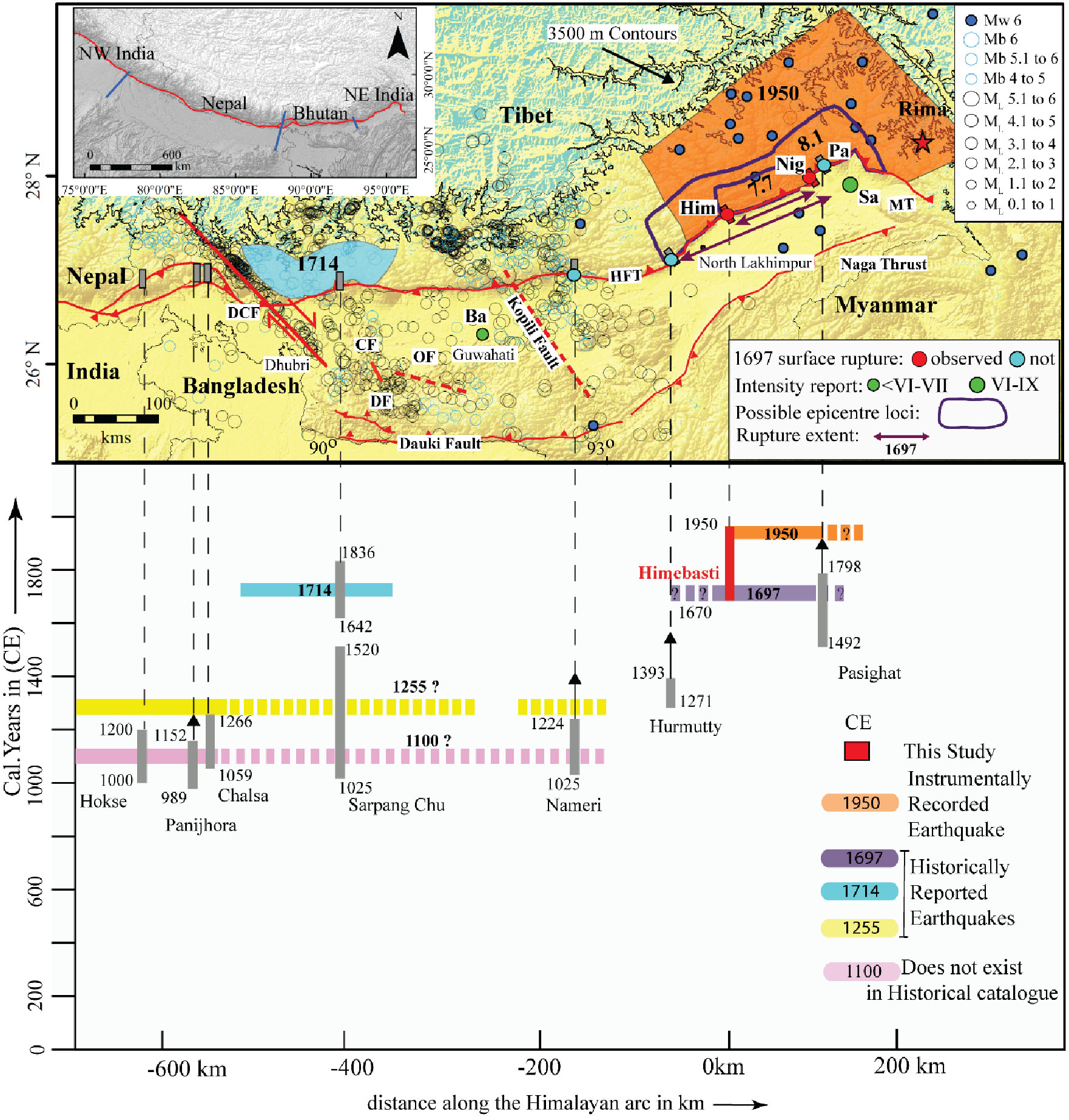
About the Study:
- Scientists from Wadia Institute of Himalayan Geology (WIHG), a research institute under the Department of Science and Technology (DST) carried out a mega trench excavation at Himebasti village, Arunachal Pradesh, where the most recent event records the imprints of the 1697 Sadiya earthquake.
- They found the first geological surface rupture signatures in the form of exposed deposits associated with rivers and streams deformed by a thrust fault along a Northeast dipping fault zone.
- They also found large tree trunks embedded in the youngest flood deposits at the exit of the Subansiri River (Sadiya town is located roughly 145 km southeast of Subansiri river).
|
Subansiri or “Gold River”:
Lohit River:
|
- The relevance of the study
-
- This finding could contribute to a seismic hazard map of the eastern Himalaya, which can facilitate construction and planning in the region.
- It will benefit the inhabitants and help in providing better infrastructure across the Eastern Himalayan foothills which is one of the most densely populated regions in the world.
What is an Earthquake?
- It is the shaking of the surface of the Earth resulting from a sudden release of energy in the Earth’s lithosphere that creates seismic waves.
- They are caused by the slow deformation of the outer, brittle portions of “tectonic plates”, the earth’s outermost layer of crust and upper mantle.
- Due to the heating and cooling of the rock below these plates, the resulting convection causes the adjacently overlying plates to move, and, under great stress, deform.
- An earthquake can range from a faint tremor to a severe motion capable of massive destruction.
- An earthquake’s point of initial rupture is called its hypocenter or focus. The epicenter is the point at ground level directly above the hypocenter.
- It is measured on the Richter scale.

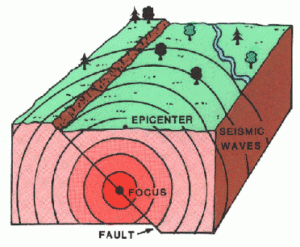
Indian seismic zones:
- Earthquake-prone areas of India have been identified on the basis of 3 factors- scientific inputs related to seismicity, earthquakes that occurred in the past & tectonic setup of the region
- Based on these conditions, the Bureau of Indian Standards divided the country into four seismic zones, viz. Zone II, III, IV, and V.
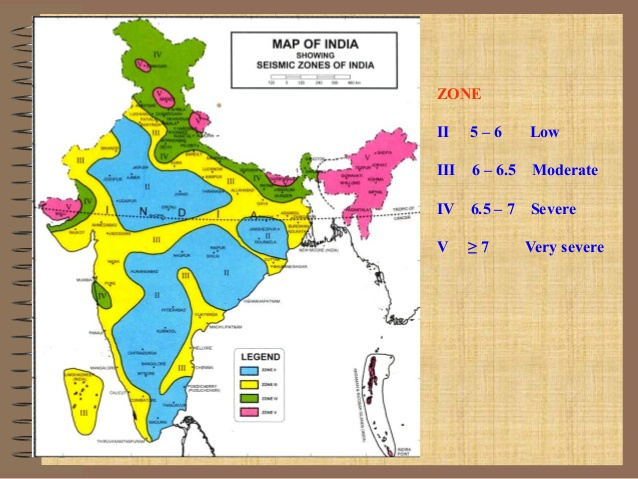
- Zone II: It is a low-intensity zone.
- Zone III: It is the moderate-intensity zone.
- Zone IV: It is a severe intensity zone.
- Zone V: It is a very severe intensity zone.
Broad Topic: Economy
One Person Companies
In News
In the Union Budget 2021-22, measures to ease norms on setting up One Person Companies (OPCs) have been announced.
Background
- The concept of OPCs was introduced by the Companies Act of 2013, based on the suggestions of the J.J. Irani Committee Report on Company Law, which submitted its recommendations in 2005.
- The report highlighted a need for a framework for small enterprises, which would contribute significantly to the Indian economy.
- However, due to their small size, they could not be burdened with the same level of compliance requirements as large public-listed companies.
- The report suggested giving an outlet to the entrepreneurial instincts of the people in the age of information technology even without an association of persons.
- It also advised for a provision of the simpler regime through exemptions so that the single entrepreneur does not waste his/her time, energy and resources on procedural matters.
- Prior to the introduction of OPCs, an individual could get into the business through a sole proprietorship mode.
Features of One Person Companies
- OPC is a company that can be formed by just one person as a shareholder.
- These companies can be contrasted with private companies, which require a minimum of two members to get going.
- However, for all practical purposes, OPCs are like private companies.
- The 2013 Act exempted OPCs from many procedural requirements and, in some cases, also provided relaxations.
- For example, OPCs do not need to conduct an annual general meeting, which is a requirement for other companies.
- OPCs also do not require signatures of both the company secretary and director on its annual returns. One is enough.
- However, there were criticisms that some rules governing OPCs were restrictive in nature, which have been dealt with by the Budget 2021-22.
- OPCs in India
- There were 34,235 OPCs out of a total number of about 1.3 million active companies in India, as of 31st December 2020.
- The number of OPCs was 2,238 out of a total of about 1 million companies as of 31st March 2015.
- Data also shows that more than half of the OPCs are in business services.
New Changes in Budget 2021-22
- Removal of restrictions on paid-up capital and turnover.
- A 2014 rule stated that an OPC would cease to have that status once its paid-up share capital exceeds Rs. 50 lakh or its average turnover for the preceding three years exceeds Rs. 2 crores. This rule has been lifted.
- Reduction of the residency limit for an Indian citizen to set up an OPC from 182 days to 120 days and also allow Non-Resident Indians (NRIs) to incorporate OPCs in India.
- Earlier, only an Indian citizen and an Indian resident could start a single-person company.
- Increasing the capital base and turnover threshold for companies that can be classified as small, meaning they can enjoy easy compliance requirements a bit longer.
- The capital base limit has been increased from Rs. 50 lakh to Rs. 2 crores, and the turnover limit has been increased from Rs. 2 crores to Rs. 20 crore.
- Benefits
- Directly benefit start-ups and innovators.
- Encourage the corporatization of small businesses.
|
Sole Proprietorship
Major Differences Between OPCs and Sole Proprietorship
|
Facts In News (FIN)
Jagannath Temple
|
|
Pong Dam Lake Sanctuary
|
|
National Research Centre (NRC) for Makhana |
|
“>
In News: Biden administration has decided to re-engage with the much-maligned U.N. Human Rights Council from which Trump withdrew 3 years back.
|
About the UN Human Rights Council (UNHRC):
Image Source: TH |
Amal (Hope) Mission of UAE<
In News: UAE’s space centre in Dubai confirmed the unmanned craft, called Amal, Arabic for Hope, had reached the end of its nearly seven-month, 300-million-mile journey and had begun circling the red planet.
About Amal (Hope) Mission of UAE:
- Due to Amal’s arrival, UAE has joined a league of just five space agencies in history that have pulled off a functioning Mars mission.
- It was the country’s first venture beyond Earth’s orbit.
- It will study the Mars Atmosphere.

Source: IE
About Mars Mission following Hope mission:
- Tianwen-1 Mars Mission: Chinese Lander- Rover combination
- It will look for signs of ancient life.
- Perseverance: Rover from the US;
- It will be the first leg in the US-Europe joint attempt to bring Mars Soil to Earth.
- It will help examine if the planet had microscopic life in the past.
- About 60% of all Mars missions have ended in failure.
- Reasons behind failures:
- Crashing.
- Burning up.
- Falling short in the testament to the complexity of interplanetary travel.
- Failure during the descent through Mars’ thin atmosphere.
- Reasons behind failures:
About other Mars Missions:
- At present, a total of 6 satellites (3 US, 2 Europe, and 1 Indian) excluding Amal are revolving around Mars. Amal will be the 7th one.
- Only two landers are at present operational on Mars i.e. InSight and Curiosity of NASA.
|
Successful Mars Missions |
Nation/ Agency |
|
USSR |
|
NASA (USA) |
|
European Space Agency (EU) |
|
ISRO (India) |
Benefits of Mars Mission:
- Space Diplomacy: The quest to win space is picking up and India also needs to set up to create its own hegemony.
- Mineral Resources: It may be a vital source of minerals in future
- Deep Space Communication Network: Mars satellites may act as a node for establishing a communication link for far space exploration.
- Origin of Life and Planetary System: It may help in understanding how the solar system came into existence.
- The catalyst for innovation: Many space technologies are now in common parlance and popularised by ISRO.
- Chances of Human Habitation in Future.
Criticism of Mars Mission:
- Wastage of money which could have been used to Solve Hunger and Poverty problems.
- Hasty and Less effective: Too many Mars Missions and space race has led to wastage of resources.
- Space Debris: Nearly 60 percent of missions have failed, leading to a large number of pieces floating in space.
|
About Mars:
|
Source: TH
Excessive Use of Fertilizer
In News: All India Coordinated Research Project on ‘Long Term Fertilizer Experiments’ over five decades have indicated that continuous use of nitrogenous fertilizer alone had a deleterious effect on soil health and crop productivity.
Other findings of the Project:
- Even the recommended value of NPK is causing micro and secondary nutrient deficiency.
- It is hampering plant growth and causing physiological disorders.
- Groundwater Pollution: Possibility of Nitrate Pollution above 10mg nitrate per liter
- Human/ Animal Health at risk.
- Nitrate pollution causes Blue Baby Syndrome in newborns.
- Fertilizer Consumption from 2018 till Kharif 2020 is as listed below in the table.
|
Fertilizers |
Quantity (in million tonnes) |
Comments/ Remarks |
|
Urea |
54.38 |
|
|
Di-Ammonium Phosphate (DAP) |
56.21 |
|
|
Muriate of Potash (MOP) |
59.88 |
|
|
Complexes and Single Super Phosphate (SSP) |
33.85 |
|

Other Problems due to excess use of fertilizers:
- Increase in input cost of farmers: It makes agriculture a less profitable occupation, aggravates Farm indebtedness and Farmers’ Suicide.
- Land Degradation: Nearly 29% of land in India is degraded.
- Dairy Product Quality: There were reports that Punjab Dairy has a relatively high level of fertilisers and hence unfit for consumption.
- Export Rejection: Many agricultural exports are being rejected on grounds of Phytosanitary measures cited by Europe and other nations
Recommendations, Initiative by Govt. to tackle the problem:
- ICAR recommends
- Soil test based balanced and integrated nutrient management through conjunctive use of both inorganic and organic sources of plant nutrients.
- Use of slow-releasing N-fertilizers (Neem Coated Urea) and nitrification inhibitors.
- Growing leguminous crops.
- Use of resource conservation technologies (RCTs).
- National Mission on Soil Health Card:
- promote soil test based balanced and judicious fertilizer application in the country
- Parampragat Krishi Vikas Yojana (PKVY)
- Mission Organic Value Chain Development for North East Region (MOVCD-NER)
- Training and demonstrations are organized through ICAR institutions including Krishi Vigyan Kendras (KVKs) and agricultural universities.
Way ahead:
- The problem is not in policy formulation and schemes but in awareness level and implementation. To promote the organic brand and to double farmer’s income in a sustainable way there is a need to hand-hold farmers.
Source: PIB
Broad Topics -GS III/EBD
Mission Innovation 2.0
In News –The Union Minister of Science & Technology addressed the beginning of Mission Innovation 2.0.
- The objective is to reflect on progress, set the scene for the discussions towards an ambitious next phase of Mission Innovation.
About:
- The Minister lauded Mission Innovation’s contribution to accelerating clean energy innovation and emphasized Mission Innovation’s role in mobilizing greater public and private investments, partnerships to move the innovation needle.
- The Minister underlined the importance of collaborative scientific efforts to realize the vision of an affordable and reliable clean energy system.

Mission Innovation (MI):
- It was announced at COP21 on November 30, 2015, as world leaders came together in Paris to undertake ambitious efforts to combat climate change.
- It is a global initiative of 24 countries and the European Union to accelerate global clean energy innovation dramatically.
- As part of the initiative, participating countries have committed to double their governments’ clean energy research and development (R&D) investments over five years, while encouraging greater levels of private sector investment in transformative clean energy technologies.
- Mission Innovation has identified eight (8) Innovation Challenges which are global calls to action aimed at accelerating research, development, and demonstration (RD&D) in technology areas.
- 8 Innovation Challenges are :

- Mission Innovation 2.0- To achieve the shared goal of accelerating innovation, all the members have agreed to develop a second phase (2.0) that includes:
- An enhanced Innovation Platform building on current activities to strengthen the global clean energy innovation ecosystem and to accelerate learning.
- New public-private innovation alliances – Missions – built around ambitious and inspirational goals backed by voluntary commitments that can lead to tipping points in the cost, scale, availability, and attractiveness of clean energy solutions.
Steps were taken by India:
- India has been fostering innovations and nurturing an enabling ecosystem to incubate and scale revolutionary ideas, help improve the quality of lives of people and provide solutions to global problems.
- India has played a leadership role in MI Steering Committee and is a member of the Analysis and Joint Research and Business & Investor Engagement sub-groups”.
- Solar installed capacity –
- India has increased solar installed capacity by 13 times and expanded its non-fossil fuel-based power generation to 134 Gigawatts, about 35% of total power generation.
- India has embarked on an ambitious target of having 450 Gigawatts of renewable energy by 2030 and is confident of achieving this.
- The National Solar Mission (a part of the National Action Plan on Climate Change) helped India to increase its solar capacity
- India is also working to considerably increase the proportion of the biofuel blend in petrol and diesel.
- Ethanol Blending Programme (EBP) aims at blending ethanol with petrol, thereby bringing it under the category of biofuels and saving millions of dollars by cutting fuel imports.
- Ujjwala Yojana
- India launched the world’s most extensive clean cooking fuel programme called ‘Ujjwala Yojana’,
- It is a scheme of the Ministry of Petroleum & Natural Gas for providing LPG connections to women from Below Poverty Line (BPL) households.
- Centres of excellence
- Five Centres of excellence in Bioenergy supported by Department of Biotechnology in India are working on both fundamental and translational research for advanced biofuels like biobutanol, biohydrogen and biojet fuels”.
- Clean Energy International Incubation Centre-
- To support the start-up innovation ecosystem, the Clean Energy International Incubation Centre established by the Department of Biotechnology, India under a Public-Private Partnership model has played a crucial role.
- Partnership with Sweden –
- India and Sweden under a partnership have developed an Avoided Emission Framework for a sustainable future.
- Under this partnership, eight companies have been selected to demonstrate an initial 100 million tons of potential CO2 emission reduction by 2030.
- India and Sweden under a partnership have developed an Avoided Emission Framework for a sustainable future.
Broad Topics -GS III/DEFENCE, GS II/IR
Ukraine Defence Purchases from India
In News –Recently, India and Ukraine signed agreements to procure military hardware from India to deepen their presence in the Indian defense market.
- The two sides will discuss a range of proposals to take forward bilateral cooperation at the Bilateral Working Group meeting between the two defense ministries in April.
About:
- Ukraine has signed four agreements worth $70 million which includes the sale of new weapons as well as maintenance and upgrades of existing ones in service with the Indian armed forces.
- This includes a pitch to India of its AN-178 medium transport aircraft.
- Ukraine is currently upgrading the AN-32 transport fleet of the Indian Air Force (IAF) under a deal finalised in 2009.
- Ukraine has in the past pitched its AN-132 transport aircraft as a replacement for the IAF’s AN-32 fleet.
- Ukraine also manufactures the R-27 air-to-air missiles which are in use by the IAF on its SU-30MKI fighters.
- Ukraine has in the past pitched its AN-132 transport aircraft as a replacement for the IAF’s AN-32 fleet.
India and Ukraine:
- Bilateral Relations
- The Government of India recognized the Republic of Ukraine as a sovereign country in December 1991 and established diplomatic relations in January 1992.
- Ukraine is one of the largest countries in Europe. India has an extensive bilateral relationship with Ukraine, spanning all spheres of cooperation.
- India and Ukraine have signed several MOUs/Agreements in different spheres such as Diplomatic relations, visa matters, consular matters, trade and commercial matters, space, science, and technology, defense, etc.
- Commerce and Trade Relations
- Bilateral trade between the two countries has grown significantly in the last 25 years, and in 2018-19, was almost US$ 2.8 Billion.
- India is Ukraine’s largest export destination in the Asia-Pacific and the fifth largest overall export destination.
- Main items of export from Ukraine to India are agricultural products, metallurgical products, plastics, and polymers, etc.
- Pharmaceuticals, machinery, chemicals, food products, etc. are the major Indian exports to Ukraine.
- Cultural
- There is a great interest in Indian culture in Ukraine at th
Previous article International Maritime Organization(IMO)Next article Gujarat’s Two-Child Policy
- There is a great interest in Indian culture in Ukraine at th
